MLB Team of the 90’s Debate
“The team of the 90’s has won their world championship!” proclaimed Tim McCarver, longtime Fox broadcaster, as the final out of the 1995 World Series was caught. In the middle of the decade, Tim put his faith in the fact that these Braves were the team of the entire decade. That old man’s prophecy will be put to the test as the statistics, stories, and sweet swings of the 2 biggest franchises in Baseball during the 90’s are laid out for a decision to be made once and for all. Who is the “Team of the 90’s”?
The story of the 1990’s Braves began the same as all teams of the 90’s: in the year 1990. The final decade of the 1900’s didn’t start kindly for the Bravos, ending game 162 with a dismal record of 65-97. Alas, it was more of the same for the Braves who hadn’t had a winning record since 1983, when Joe Torre was the manager. They had managed to make some strides towards success when Bobby Cox, acting general manager, decided he could do it all and took up the role of field manager as well at midseason. Bobby Cox (spoiler alert) is sitting bodiless in Cooperstown right now after being really good at his job(s) for over 29 years. So he was obviously pretty good at his job. As general manager Cox made two extremely notable moves that really helped out down the road: trading for some pitcher from Michigan and drafting some high school kid from Jacksonville. Their names? John Smoltz and Chipper Jones. Moving on from the front office and onto the field, the play was lackluster, as you’d expect from an aging team with a losing record. There were, however, some bright spots. The team leaders in ERA were the blossoming young duo of Smoltz and Glavine, while that season’s rookie of the year, David Justice, was doing rookie of the year things. Fans of Atlanta baseball had a hopeful eye on the future.
The New York Yankees seemingly had done enough winning already. Maybe that was their mindset heading into this new decade, as they also finished last in the division with a record of 67-95, admittedly a little better than their southern competition. Aside from that minor 2 game victory, this Yankees team had very little that was noteworthy going on. The best hitter on the team, Roberto Kelly was 25 and on his way out in a couple seasons. The best pitcher on the team was a 31 year old Mike Leary, who lost a career high in games this year and was flinging it all over the place, with a career-high 23 wild pitches. The best player on the team was 1985’s AL MVP, Don Mattingly, who seemingly decided to not play good baseball anymore. The best news Yankees fans would’ve heard at the time was that the team had signed a 20 year old Mariano Rivera before the season.
Now that the Braves had dipped their toes into what the 90’s had to offer, they cannonballed right into the deep end. Jumping from worst to first in the NL West, the Braves were playoff bound. The driving factor of the 1991 Braves was the Cy Young season delivered by 25 year old lefty Tom Glavine. Glavine struck out 192 in 246.2 innings, while tossing to the tune of a 2.55 ERA. The rest of the staff was similarly brilliant, as all 4 starters had an ERA under 4.00 and allowed the third least runs of any NL team. Pitching is only half the game, though, and the men in the box weren’t bad either. The 1991 Braves’ hitters were top 5 in the National League in the following major categories: Runs Scored (2), Hits (3), Doubles (2), Home Runs (3), Stolen Bases (3), Base On Balls (4), Strikeouts (5), Batting Average (2), On-Base Percentage (2), and Slugging Percentage (3). So, basically all of them. The team’s best hitter also happened to be the league’s best hitter, as Atlanta’s Terry Pendleton won the NL MVP in 1991. The Braves team that ended as the second best team in the NL ran into the best team in the NL in what was formerly the only round of the playoffs, the National League Championship Series. After a back and forth 6 games, with the teams at 3 games a piece, John Smoltz pitched 9 scoreless to send the Braves to a matchup with the reigning champion Minnesota Twins. Another close 7 game series, 3 of which went to extra innings, including the winner-take-all game 7. In the bottom of the 10th of game 7, a double, back to back intentional walks and a single to left center walked off the game, sending the Minnesota fans happy with back to back World Series wins for the Twins and sending the Braves back home empty handed. Atlanta was now loaded with the Cy Young, MVP, and a dozen young and talented players. They were ready for a decade of dominance.
Now, back to the Bronx. The Yankees did some more winning themselves this year. Four extra games worth. With a record of 71-91, the Yankees improved to 5th in the AL East (out of 7) which is about the only positive for this Yankees team. The pitching staff was terrible, as last year’s stand out Tim Leary slunk back into a 6.49 ERA. Half the starting staff had an ERA over 5 and the entire staff was bottom 5 in runs, hits and ERA. What about hitting? Exactly. The team was all-around not good. The best news for Yankees fans this year was the arrival of a new general manager. NY was off to a much slower start than ATL.
1992 was like the Braves’ Godfather 2- better than the last one. The Braves of ‘92 were the best team in the all of MLB with a record of 98-64. That record was thanks in large part to Atlanta’s league best four all-stars that season; as Tom Glavine, John Smoltz, Terry Pendleton, and John Gant all suited up for the National League in San Diego. While Atlanta’s hitting took a small step back in ‘92, so did the hitting of every other team that faced the Braves, as Atlanta’s pitching improved by leaps and bounds. The starting staff was top of the class; as all six listed starters threw for an ERA under 3.36. The staff as a whole was tops in Wins, ERA, Runs, and shutouts. This masterful ability to stop opposing hitters from rounding the bases carried the Braves to another 7 game pennant tussle with the Pittsburgh Pirates and MVP Barry Bonds with the same outcome as last year’s NLCS. The Braves had won their second straight National League pennant, led by NLCS MVP John Smoltz, and were ready for a matchup with the Toronto Blue Jays. The 1992 World Series was again a close one, as every game except for 1 and 5 was decided by 1 run (1 and 5 were Braves wins), but Toronto squeaked out the victory in 6 games. Overall, this season cemented the Braves in the league’s upper echelon and they were poised to remain there going forward. Good season.
Moving on from their all-around mess in 1991, the Yankees were ready to put their name in for the ‘team of the 90’s’ contention. Oh what’s that? They weren’t ready at all? Bummer. The ‘92 Yankees were regimented to September-only baseball yet again, finishing with 76 wins and 86 losses. The biggest problem with the ‘92 Yankees wasn’t that they were bad. It’s that they were below average. The hitting and pitching improved, which led to a 5 game increase, but the team still couldn’t win. One bright spot for this team was the All-Star season produced by one Roberto Kelly. Unfortunately, that was just about the only bright spot. The only young player worth anything on this team was CF Bernie Williams, a future all star. Overall, the Yankees continue their slow start to the decade, but end up with a consolation prize in next year’s draft in the form of teenage shortstop Derek Jeter.
On December 19, 1992, the Braves and their fans got an early Christmas present. Reigning Cy Young and Gold Glover, Mr. Greg Maddux from San Angelo, Texas, put pen to paper to join the Braves. The Warriors just signed Kevin Durant. The best pitcher in the world joined the best team in the world. How did this one play out? Surprisingly, they didn’t win every game. They did win most of them, though. 104 to be exact. Improving by 6 wins when you’re already the best team in the league is a tall order, but adding the Cy Young will deliver that order with express shipping. There’s little not to fawn over regarding this Braves’ pitching staff. First in wins, first in ERA, first in shutouts, first in hits allowed, first in runs allowed, and first in home runs. The hitting in ‘93 was average, maybe even below average, but it didn’t really matter. The lone thing the Braves hitters did with any prowess was clobber baseballs, as they were 1st in the NL in home runs. The power combined with the pitching led to a league best run differential of +208. If success is measured in accolades, here’s a brief awards rundown: five All-Stars, the Cy Young, Gold Glove P, and a Silver Slugger. This team was a juggernaut. As certainly surprising as it was back then, it remains a surprise that this team didn’t win the World Series. They didn’t even win a NL pennant. The NL East champion Phillies came to play, out-hitting the Braves in six games to head to Toronto for the World Series. Adding the best pitcher in the game and not winning it all was certainly a disappointing outcome for the ‘93 Braves. There’s always next year.
In New York, the Yanks were making some exciting moves of their own. Using that big ole Yankees bank account, Steinbrenner signed a 35-year-old Wade Boggs and a 32-year-old Jimmy Key, both coming from division rivals. The moves worked wonders. Jumping up 12 wins, the Yankees had their first winning season of the decade with a record of 88-74. The new veterans were a big reason why. Boggs and Key both delivered All-Star seasons and combined for a Wins-Above-Replacement of 10.6, which is conveniently right around the actual win increase the Yankees underwent. The team improved across the board with their new veteran identity, most notably moving from seventh to first in hits and from eighth to first in shutouts in the AL. What did all this improvement lead to? Nothing, really. The Yankees miss the playoffs again for the 14th time in 14 years. While these developments were certainly exciting, they weren’t exactly setting the stage for anything. The average age of the starting nine was 30, again with Bernie Williams being the only young star on the roster. While it certainly is an improvement, the Yankees still weren’t ready to be the team of the 90’s.
On August 11th, 1994, the Braves beat the brand new Colorado Rockies at brand new Coors Field by a score of 13-0. Maddux tossed a gem, allowing just 3 hits in 9 innings while Atlanta’s bats took advantage of the unique elevation of the Rockies’ stadium. It was the last game the Braves would play that season. Admittedly, this wasn’t earth-shattering news for the Braves, who were just six games over .500 and trailed the Montreal Expos for the division lead in the newly-realigned NL. It was, however, most likely earth-shattering news for Greg Maddux. When the season stopped, Greg Maddux had an ERA of just 1.56, the lowest since Bob Gibson in ‘68, and the lowest since. While he was awarded the Cy Young, with 2 months remaining on the schedule at the time of the strike, he could’ve pitched the greatest season in the live-ball era (after 1920). And although it seems like this may not have been the Braves year, it’s always a shame to miss out on this roster having a chance at the postseason.
In the Big Apple, the Yankees had finally gotten back to their winning ways. With a record of 70-43 on August 12, the Yankees were AL East champions*. They trotted out virtually the same one-foot-in-the-grave lineup as the season prior, with the exception of LF Luis Polonia, who is notable as he won the World Series with both the Yankees and Braves. Anyway, the team was good. Key and Boggs re-upped as All-Stars while being joined by 31 year old batting champion Paul O’Neill in the exhibition as well. More premium prizes for the pinstripe pantheon include the wins of Mattingly and Boggs at the corners for the Gold Glove award, as well as Boggs’ Silver Slugger. While this team was probably happy about collecting their mantle-pieces early, they certainly weren’t happy about their hard work to reach October baseball giving them the same amount of October baseball they’d had over the last decade. The road was riddled with dud seasons and no-namers (literally) putting on the pinstripes, but the Yankees were back to start the second third of the 90’s.
BRAVE’S NEW WORLD – THE ATLANTA BRAVES CAN FINALLY BEHAVE LIKE CHAMPIONS AFTER 5 LONG YEARS OF TRYING.
This was the headline of an Atlanta newspaper on the morning of October 29, 1995. (Spoiler alert) This is the year the Braves win it all. This year was like a live-action Disney remake: you knew it was going to happen, you just weren’t sure when or how often. The answers to those questions? Now, and (unfortunately) only now. The ‘95 Braves didn’t win 162 games, infact, they didn’t even win 100. 90 wins was all they needed to win the division and that was all they got. The mastery of this season was on the mound, as the big three (Greg, John, and Tom) combined for a pitching WAR of 19.1. Steve Avery and the rest of the staff pitched in for arguably the greatest pitching season of all time. Out of the 13 major statistical categories, the Braves led in 9. Nine?! Exceptionally, Maddux, who remained a Zeus among Poseidons and Hades’, had an ERA of 1.63 and won Cy Young, Gold Glove, as well as suiting up during the All-Star Game in Arlington. Glavine, whose bat had cooled off since his Silver Slugger award in ‘91, hit a round-tripper along with 14 other hits and a batting average of .202 to win his second such award. The season was also a wonderful first chapter in the career of Braves lifer Chipper Jones. Heading into the playoffs and the newly-introduced Division Series, the Braves met up with the similarly new Colorado Rockies, and swiftly showed them the door in four games. It seemed as though the Braves had their heart set on not playing more than four games, as their best of seven series with the Cincinnati Reds led by MVP Barry Larkin was bookended by brooms when the Braves swept them. The Braves’ opponent in the World Series was the Cleveland Indians who had stars such as Omar Vizquel, Jim Thome, Kenny Lofton, and a young Manny Ramirez on the payroll. The series was over in a well-contested six games, with Tom Glavine pitching a series-winning gem in game six en route to a World Series MVP. Tim McCarver made his iconic call and the team of the 90’s was soaring high. Will the Braves become Icarus? First, a word from the Yankees.
The New York Yankees won less games and lost more games this season, but that wasn’t really the headline. The big story of the season was the Yankees’ laying the groundwork for their future dynasty. Notables include future 5x World Series Champion and All-Star lefty Andy Pettitte getting the call up, a trade for 32 year old reigning Cy Young David Cone, calling up some kid from New Jersey for two weeks, and giving The Sandman a spot in the bullpen at 25. The season overall was like ‘94 but on the opposite of steroids (unlike most of the players). Another three all stars, another Gold Glove for Boggs, and another playoff appearance (well, in theory). The difference between this year’s playoff appearance and last years, other than actual playoffs, was that the Yankees were in as the AL’s first ever Wild Card team, and would face Seattle in the ALDS. This series is remembered for many reasons, but a Yankees victory is not one of them, as Edgar Martinez doubled Seattle into the ALCS. The season was a step back, if the step was into a cannon that led to five championships down the road.
In one of the most “mom says it’s my turn on the Xbox” moves in MLB history, 1996 saw John Smoltz win the Cy Young award following teammates Tom Glavine and Greg Maddux. Quite honestly, 1996’s Cy Young could’ve been any of the big three, as they all delivered stellar seasons in their own way. Smoltz was the Cy Young, Maddux was the Gold Glover, and Glavine won Silver Slugger. All three were obvious All-Stars, and were even joined by star youngster Chipper Jones. This ‘96 season, more than any to this point, demonstrated the complete dominance of Maddux, Smoltz and Glavine. The rest of the starting five, Steve Avery and Jason Shmidt, had ERAs of 4.47 and 6.75 respectively, so they clearly weren’t giving hitters much trouble every 4-5 days. Despite the slackjob by those two, the team managed to be pretty good on the bump, as they were again first in wins, losses, runs, and strikeouts. All told, the ‘96 team finished with 96 wins and their 6th straight division title. The Braves started off the playoffs against the Mike Piazza-led Wild Card Dodgers and executed their second first round sweep in as many years. The Braves gambled with their legacy in the NLCS, when St. Louis had a 3-1 series lead through four games. Luckily, the next three starters on the schedule were John Smoltz, Greg Maddux, and Tom Glavine, and the Braves were ready for a crossover episode with the other star of the story, the New York Yankees. The Yanks can take it from here.
When the Yankees opened the season in Cleveland, the last remaining un-retired single digit number in Yankees history was on the back of a rookie shortstop. A former first round pick from Central High School in Kalamazoo, Michigan, this kid always knew he’d don the navy blue pinstripes. In elementary school, he made two prophecies: He’d play for the Yankees, and he’d marry Mariah Carey. He fulfilled both…kinda. He DATED Carey. You know his name. Derek Sanderson Jeter. Immediately, The Captain was making an impact. In the 5th inning of the opening day game in Cleveland, he took Dennis Martinez deep left for his first major league blast. He kept doing spectacular things all season, and was named the AL Rookie Of The Year on a veteran team that won 92 games and the AL East. The star-studded roster had three all-stars, with Boggs, Pettitte, and John Wetteland all getting nods, and Rivera, Cone, Key, Williams, and Jeter helping fill the list of big names on this roster. The team started their playoff run with an ALDS tilt against the Texas Rangers and moved on in a quick four games. The Yankees then continued their pattern of one loss series’ in the ALCS against the division rival Orioles, winning in 5 to go to the ‘96 World Series, the team’s first pennant in 15 years. Their competitor was the powerhouse Atlanta Braves. The Braves started off hot, winning 12-1 and 4-0 in games 1 and 2 on the backs of Smoltz and Maddux. Cone then out pitched Glavine in game 3 to tip the series to 2-1. In game 4, Steve Avery appeared in relief and promptly blew the game in the top of the 10th, letting the Yankees pull even 2-2. Game 5 saw dueling aces John Smoltz and Andy Pettitte both go 8 innings, but Smoltz’ 5 hits to Pettitte’s 4 gave a third consecutive win to the Yanks, who were one win away as the series went back to the Bronx. The rest was history. Maddux allowed three in the 3rd inning, and the Braves could never recover. The Yankees had number 23 and were now tied with the Braves for 90’s ‘ships.
The following season, everything was just peachy in the peach state. The Braves had a beautiful brand new ballpark called Turner Field, and seemed to use it as a distraction from their defeat last autumn. The team was able to test out the new rafters pretty early, as the team won a league best 101 games and another division pennant. The ‘97 Braves were basically an All-Star team by themselves, as Greg Maddux, Jeff Blauser, Tom Glavine, Chipper Jones, Kenny Lofton, Javy Lopez, and Denny Neagle all had the tomahawk across their chest in Cleveland. Greg Maddux renewed his perennial Gold Glove title by winning his 8th in a row. Smoltz, who had a down year by Smoltz standards, made up for it by stealing a Silver Slugger 3-peat from teammate Tom Glavine, while being joined by shortstop Jeff Blauser in the ‘97 Silver Slugger club. They also trotted out the MLB’s youngest player, Curacaoan center-fielder Andruw Jones, who finished 5th in Rookie of The Year voting and was an obvious star in the making. The ‘97 Braves pitching staff was one of the greatest of all time, notably the starting rotation that had an average ERA of 2.78, going along with first place finishes in nearly every major statistical category from the staff as a whole. This pitching dominance combined with the hitting efforts of Chipper and the gang fed into a run differential of +210. They carried this shutdown season into October, when the Astros became the 3rd NLDS sweep executed by the Braves in as many seasons. Unfortunately, when the 4 year old Wild Card Miami Marlins came to town, it wasn’t their last stop. The Marlins outhit the Braves nearly the entire series, but when they didn’t have their best, NLCS MVP Livan Hernandez made sure the Braves didn’t either. In 6 games, the Braves pennant streak was snapped by a toddler.
New York was having a spot of championship hangover in ‘97. Maybe they were just tired from living in the city that never sleeps. No matter the cause, the Yanks were worse the season following their return to the top. They still had the same players, though, and those players were stars. Mo was an All-Star. Bernie WIlliams was an All-Star. Paul O’Neill was an All-Star. Tino Martinez was an All-Star. Even an ever more geezer-like David Cone made it into the All-Star game. Tino Martinez was the brightest of them all on this ‘97 squad. A former Mariner, Martinez made his way to the Bronx via trade in ‘95. He was a solid everyday bat in ‘96, but was nothing special until something (steroids) helped his power shoot through the roof. Tino used baseball’s favorite workout routine to help him jump from just 25 homers in ‘96 to 44 homers just a year later, securing him the Silver Slugger and a second place MVP finish for his valiant effort. This effort helped the team win 96 games, but wasn’t enough to top the Baltimore Orioles for the division pennant. The Yankees were forced to play as the Wild Card against the 86 win Cleveland Indians. Only 86 wins? The Yankees can pull this one out, right? Please stop asking rhetorical questions regarding the Yankees. It never goes well. Just like this series. The Yankees face the same fate as the Braves by losing to inferior teams that are on the road to pennant-town. ‘97 was a tanker all around.
1998 was the year of Tom Glavine. He decided third fiddle wasn’t the instrument for him, and switched to a pitching Stradivarius. He won the Cy Young with a 2.47 ERA, repossessed the Silver Slugger from Smoltz, and was obviously an All-Star. He even somehow managed to stand out in the rotation that Bleacher Report voted as the best rotation of all time. So obviously Glavine wasn’t the only one making magic on the mound. Maddux had a league-best ERA of 2.22 and won the obligatory Gold Glove. Smoltz was bitten worse by the run bug, posting a 2.90 ERA, but allowed the least hits of the starting rotation. Those outside the bullpen held it down as well. Sophomore stud Andruw Jones won a Gold Glove in Center Field in just his second year. Chipper Jones was voted into the Home Run derby for his power prowess. Atlanta also sent six Braves to the All-Star game. All this steel and starpower led to 106 wins and yet another division pennant. The Braves’ tradition of sweeping their NLDS opponent was then carried on to see another year, when MVP Sammy Sosa’s Cubbies were shown the same treatment as a dusty kitchen floor. After the first three games of the following series, the Braves outlook was grim. They trailed Tony Gwynn’s team of Spanish Fathers three games to none, and had two games left to play in SoCal. Game four, the last game Braves fans could cling to as a certainty, saw the Braves hang six runs on the board in the 7th to stem the tide of the series. They then beat the Padres by a misleading score of 7-6, as the Braves three run lead in the bottom of the 9th was nearly foiled by Kerry Ligtenberg and his talent for giving up two-run blasts. Regardless of Kerry’s antics, the series was headed back to the heart of the south. And… the Braves lost. What seemed inevitable after trailing 3-0 finally came to pass. The year of Tom Glavine died in a triumphant fury, as a barrage of singles allowed by the Cy Young himself resulted in 5 runs in the 6th and secured the Braves fate.
The Yankees had a theme going on in ‘98 too. This was the year of being-the-best-darn-team-on-planet-earth-and-finishing-two-games-short-of-the-greatest-record-of-all-time. It wasn’t very catchy. It didn’t really matter, though. The team was ballin’. The hitters were first in Runs, Walks, On-Base %, Slugging %, and On-Base+Slugging (obviously), as well as second in Hits, Stolen Bases, and Batting Average. You don’t win 114 games only on the backs of hitters, though, and the pitchers backs were pretty involved too. The staff was first in Wins, Losses, ERA, Complete Games, Shutouts, Hits, Runs, and Home Runs. It was a wonderful team effort. That’s not to say there weren’t a fair share of standouts. David Wells, Scott Brosius, Paul O’Neill, batting champion and Silver Slugger Bernie Williams, and Derek Jeter all were voted into the All-Star Game. The team was riding high, taking a seven game win streak into the NLDS against the Rangers. That win streak was extended to 10, as the Rangers put up little resistance to their fate. Last year’s big villain, the Cleveland Indians, rolled into town next for the NLCS. The Indians actually led this series after three games, 2-1, but that was a fleeting moment of celebration for Cleveland. The Yankees won three in a row to clinch the AL Pennant and prepare for a World Series with the San Diego Padres. The Yankees outscored the Padres by 13 runs in the four games it took them to defeat San Diego’s finest. New York swept the Padres for number 24 with just one year remaining in the decade.
As the millennium drew to a close, the Braves weren’t phoning it in. Unfortunately, there’s nothing new to be said about this 103 win Division Champion Braves team that hasn’t been said eight different ways already. The pitching was obviously great. The hitting was obviously worse, with the exception of NL MVP Chipper Jones, who was the saving grace of a truly average lineup. Maddux’s glove still had the Midas touch, and it had seemingly affected teammate Andruw Jones, as he grabbed a Gold Glove too. Perhaps the biggest shock of the season was the decline of the big three, as all three slumped below an ERA of 3.00, which may have been a sign of an era ending. Regardless, the Braves had one final chance to carve their name into this godforsaken decade with playoff success. They started off as they usually did, winning the NLDS, only letting up one win to the Astros. They then squared off against the division rival New York Mets, sending them to watch their cross town neighbors in the World Series from the couch in six games. The Braves were back at the top of the NL, and ready for a sequel of 1996. The sequel had the same ending as the first one. Yankees win the ‘99 World Series and close the door on the 90’s Braves.
The Yankees of 1999 were in a similar place as the Braves. They’re good. The origin story is over. The dynasty has arrived. There is no point in relishing the details. Here are the awards. Mo won the Reliever of the Year Award. Brosius and Bernie won Gold Gloves at 3rd Base and Right Field respectively. Williams, Cone, Rivera, and Jeter made the All-Star team. This season was par for the course. Nobody was surprised when they won 98 games and the AL East. Nobody was surprised when they swept the Rangers in the first round again. Nobody was surprised when they bounced their greatest rival in five games to go to the World Series. Nobody was surprised when they beat the aging Braves to win another World Series. They were the Yankees. All they do is win titles. But, their time was up as well. It’s almost the year 2000.
All told, the Yankees and the Braves were undeniable powerhouses in the 90’s. The Yankees veteran presence and big bank account, combined with a steady current of farm system talent, served them very well in the latter half of the decade, getting three championships out of the deal. The Braves were a superteam from the 2nd year of the decade, becoming an iconic perennial contender with young stars in the lineup and the breadwinners on the bump, but could never live up to their full potential. To decide the team of the 90’s in an unbiased way, the most important achievements and accolades have been assigned a numerical value. The team with the greatest sum of these categories will be crowned “Team of the 90’s”. The scoring is as follows: Championships are worth 100, League Pennants are worth 50, League MVPs are worth 50, Divisional Pennants are worth 45, Cy Youngs are worth 35, Gold Gloves are worth 25, Silver Sluggers are worth 25, and All Stars are worth 10. The final tallies were Yankees: 1085, Braves: 1940. The Braves are decidedly the team of the 90’s. The Braves were more consistent winners throughout the decade, beginning their division reign as early as 1991. While the Yankees won the top prize more times, the Braves won more NL pennants, and again were more successful earlier. The Yankees were still rebuilding while the Braves had cemented themselves as a superteam with the addition of Greg Maddux, who was a versatile weapon for the entire decade. The core the Braves established and kept after 1992 was ultimately one of the best teams in MLB history, and is unequivocally the team of the 90’s.

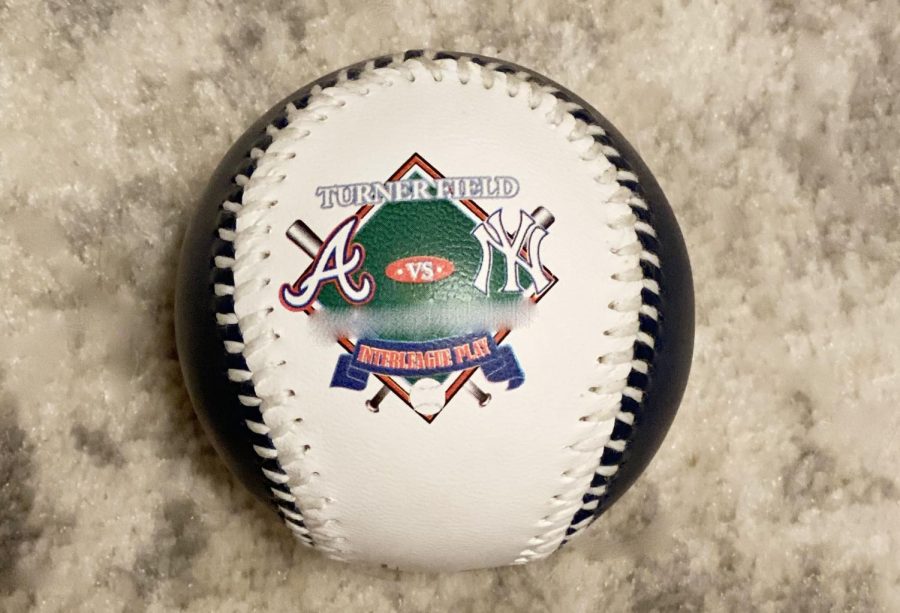

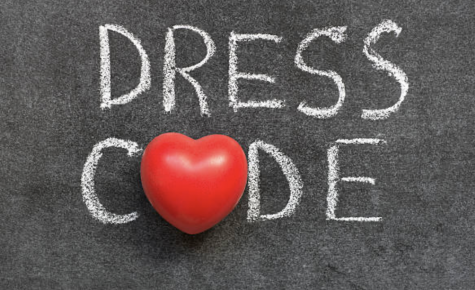




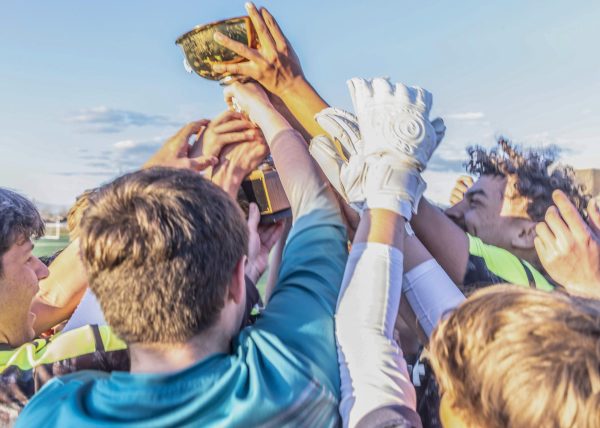
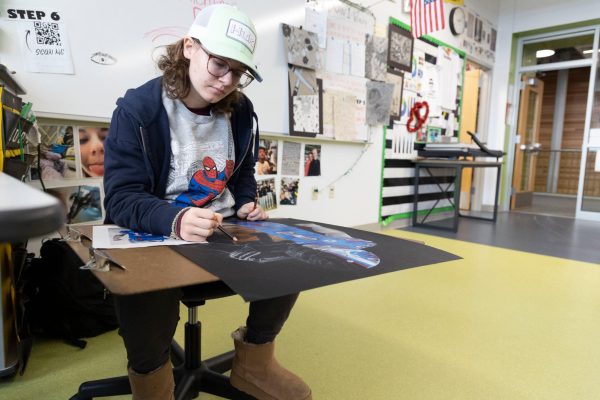
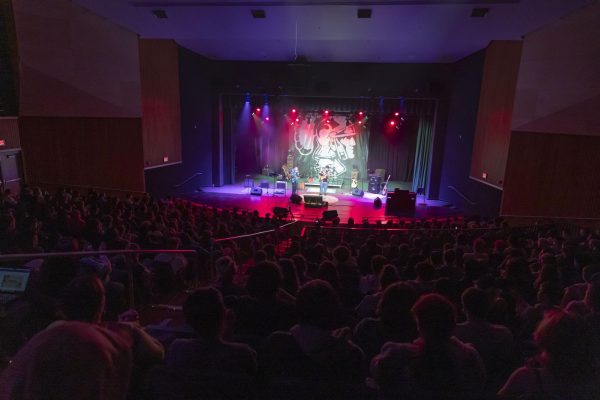
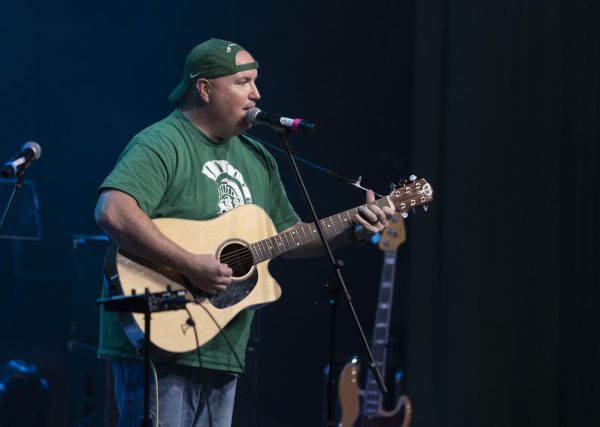
James • Aug 25, 2024 at 8:01 pm
World Series championships should be valued higher. This is a flawed analysis. Head to head the Yankees beat them twice . The Yankees were about championships not individual awards and the 1998 team is one of the all time great teams in baseball. You cannot say that about any 90s Braves team
Wayne A Brumbaugh • Apr 14, 2022 at 9:52 am
One championship and lost 8 consecutive games in the world series to the Yankees. Choking team of the 90s yes